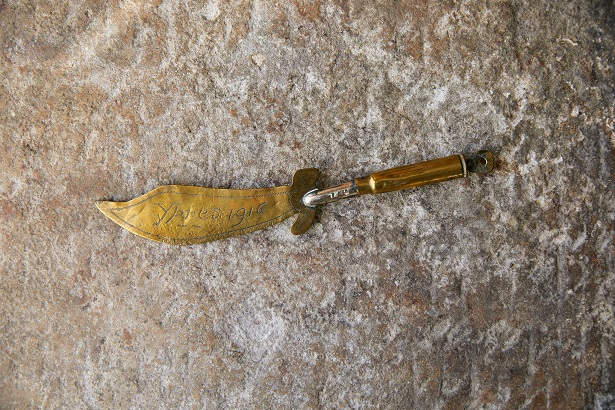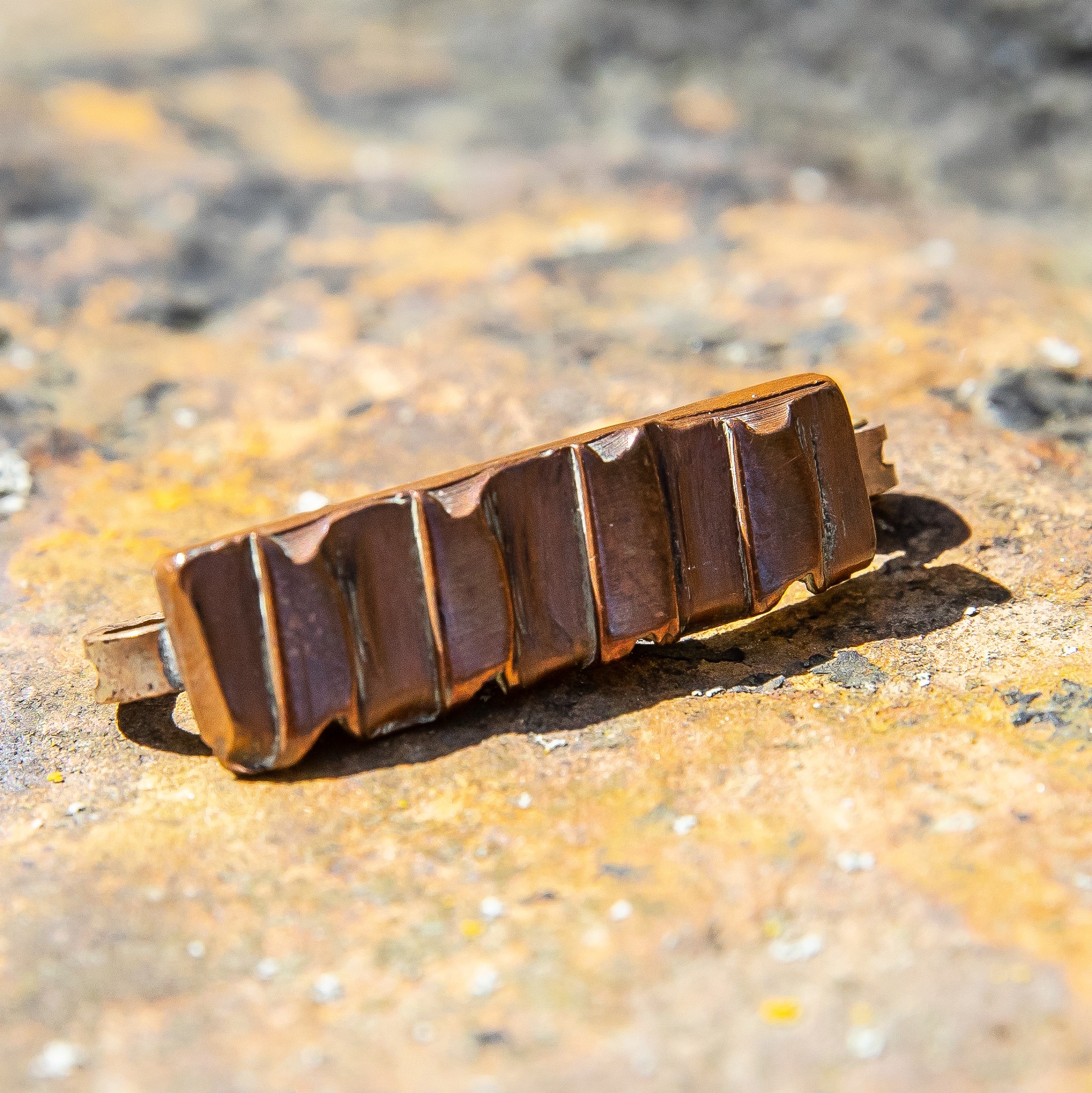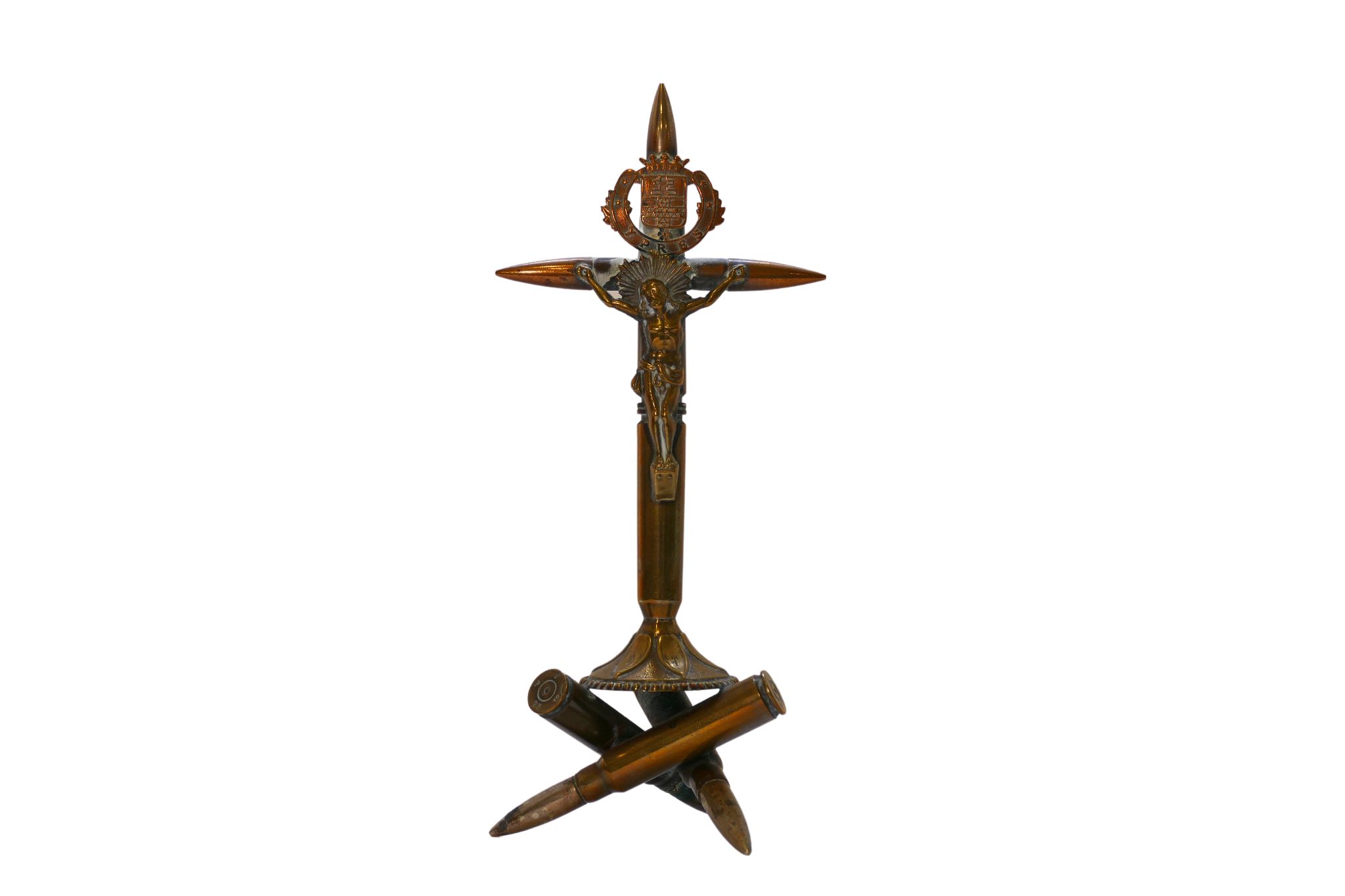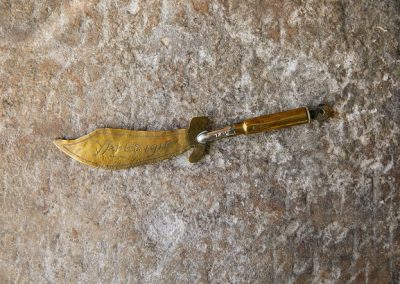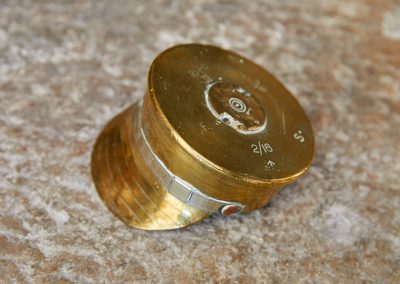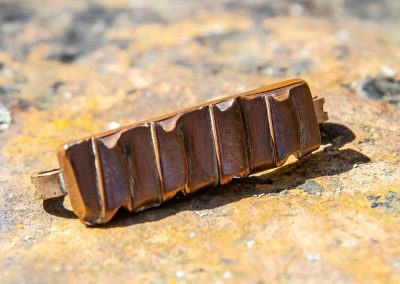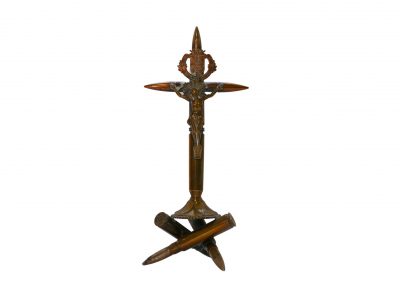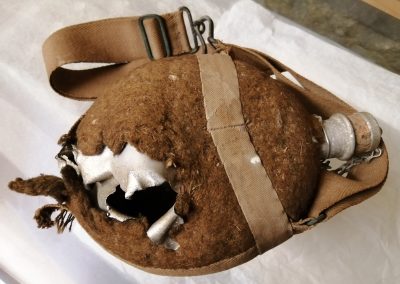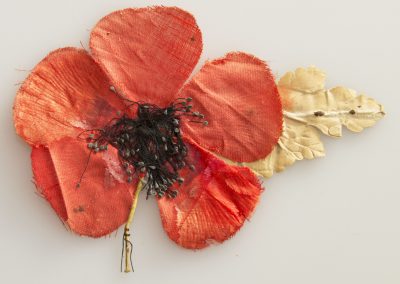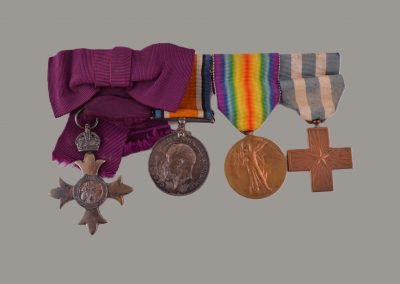Explore ‘Trench Art’ from World War One
The term ‘Trench art’ is used to describe objects that were created from the debris of war, usually by serving soldiers. It’s most commonly associated with World War One, when soldiers used materials that were readily available in the trenches and on the battlefields. Making such objects must primarily have been a way to cope with the harsh realities of war and to pass the time during periods of boredom. You can explore a range of examples.
Trench Art Paper Knife & Peaked Cap
From Beck Isle Museum, Pickering, North Yorkshire
The peaked cap design was made from the base of a shell left behind after it exploded. The paper knife was made from a used bullet and is marked with the date 1916 and Belgian place-name Ypres.
From the five military engagements around Ypres between 1914 and 1918, it is believed that there were more than a million casualties. These examples (also featured in the video) are from Beck Isle Museum in Pickering, North Yorkshire.
Watch the Video – find out more about trench art. If you’re sharing this video with a group, you could conceal what the objects are until they’ve watched it.
Watch The Video With Subtitles
Trench Art Brooch
Ryedale Folk Museum, North York Moors
Many museums have items of trench art like this within their collections, an indicator of how popular it was. This small brooch is an example that is both decorative and functional, from nearby Ryedale Folk Museum’s collection. It has been fashioned from a fragment of German shell. Perhaps its maker had it in mind as a present for someone specific.
Trench art was the handiwork of resourceful individuals from a range of backgrounds, including prisoners of war. In those circumstances they were sometimes made as a means of generating income.
Trench Art Crucifix
From The Green Howards Museum, Richmond, North Yorkshire
This crucifix is made from .303 cartridge cases which were used during World War One. We don’t know who made it or where it came from, but it is likely to be created from items collected near to Ypres during the war.
Given the complexity of its design, it is unlikely to have been made while physically in the trenches. Such an item would have required greater technology than is likely to have been available. Perhaps the soldier collected these bullets, the figure of Christ and the horseshoe badge featuring Ypres, with the intention of creating an artwork at a later date.
This piece is part of a large collection of trench art at The Green Howards Museum.
Watch The Video
– to explore this object further
Watch The Video With Subtitles
Three Chalk Carvings
From The Green Howards Museum, Richmond, North Yorkshire
These three chalk carvings show the Regimental Badge of the 12th Battalion Yorkshire Regiment. They were made in 1916 by the batman of Captain A. Clive Mildred while the Battalion was stationed near Loos. The name of the batman is unknown, but the initials HN are carved into the underside of each piece. Captain Mildred was one of the Company Commanders, and appears in photographs from the Battalion’s history.
Chalk was a common material in the trenches of that area, and would have been readily available. The 12th Battalion, also known as the ‘Teesside Pioneers’, were involved mainly in trench construction and defence work during this period, which may have allowed time for carvings like these to be made.
At a glance… explore and compare the range of ‘trench art’
Talking Points
Do you recognise the objects?
Can you tell what they have been made from?
What other questions do you have about the objects?
Do you think this art would have needed much skill to produce? Which piece do you think would have taken the most skill?
Why do you think there are so many surviving examples of trench artwork?
What sort of object would you choose to make if you were making art from found materials?
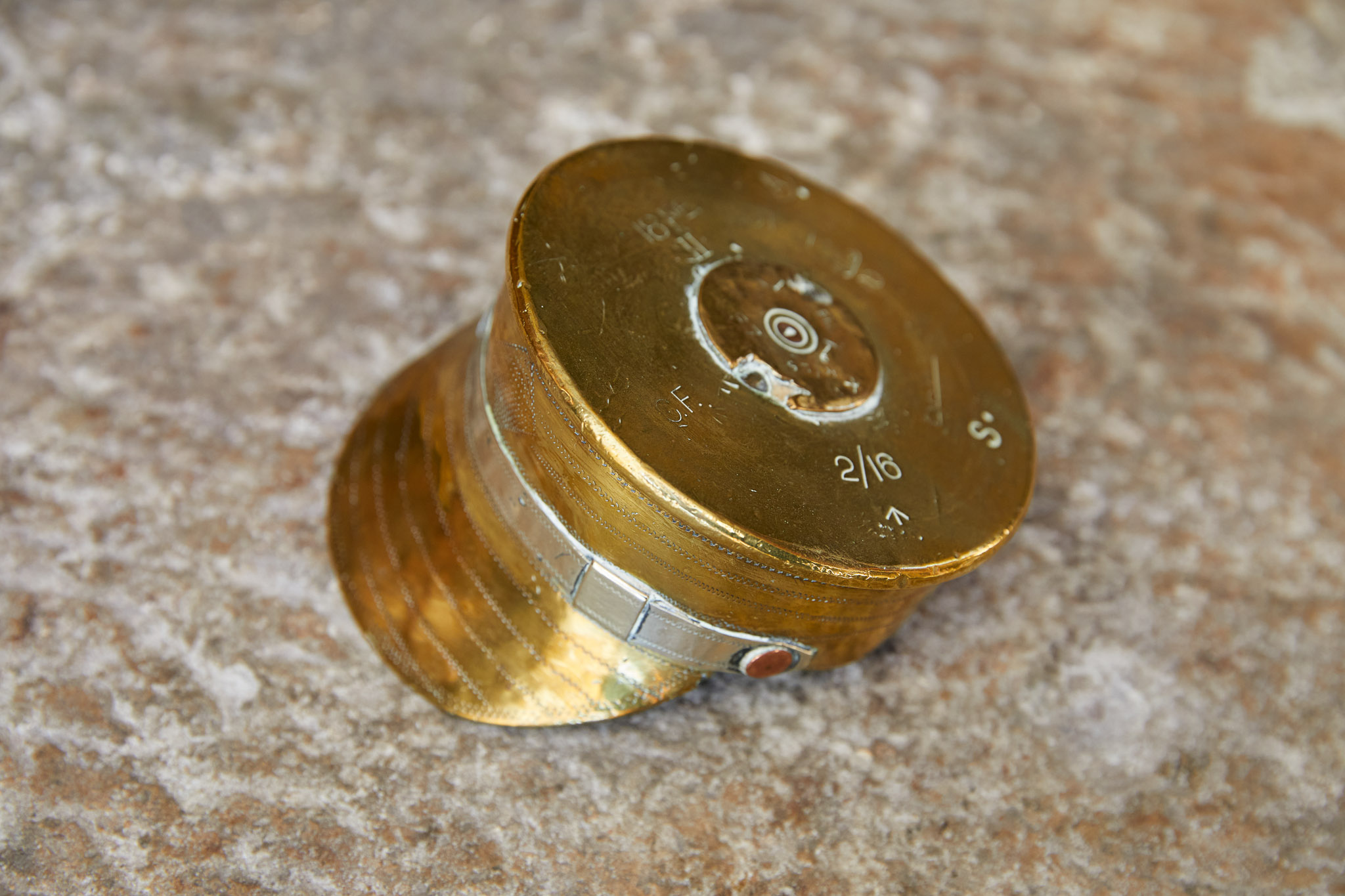
Vocabulary
Trench art – Objects made by soldiers, often from materials found on the battlefield, such as shell casings, wood, or chalk. These items were usually made during rest periods as souvenirs or keepsakes
Trench – A long, narrow ditch dug into the ground, used by soldiers during war for protection from enemy fire and to move safely along the front line
Battalion – A military unit made up of several hundred soldiers, usually divided into smaller groups called companies. A battalion is led by a commanding officer, often a lieutenant colone
Hands on History
Across North Yorkshire, you can borrow World War One loan boxes from Scarborough Museums and Galleries, from Beck Isle Museum in Pickering and from The Dales Countryside Museum in Hawes.
The Green Howards Museum in Richmond, North Yorkshire, also has a hands-on workshop to explore objects from World War One suitable for primary schools.
Scarborough Museums and Galleries also offers a creative workshop on the theme of World War One and its impact on the people of Scarborough.
Find out more about the museums that feature these objects by clicking on the pins.
Explore more objects from the First World War

